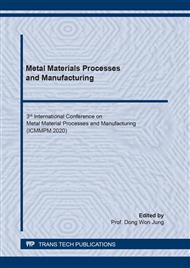p.3
p.13
p.23
p.33
p.43
p.51
p.59
p.65
p.71
Low-Cycle Fatigue-Creep Interaction Behavior of GH4169 Supperalloy
Abstract:
Effects of different loading and uninstalling and safe loading time on the low-cycle fatigue-creep interaction behavior of GH4169 superalloy at 650°C/850MPa have been investigated. The study found that under the safe loading time, with the longer the loading and unistalling time, the fatigue-creep property and life of this alloy were gradually improved. However, under the same loading and uninstalling time, with the extension of the loading time, property of the fatigue-Creep of the alloy was gradually reduced, and its life was gradually shortened. In addition, The fracture failure behavior of the alloy under different conditions was studied in detail. Interestingly, With the extension of the holding time, the fracture failure of the alloy was changed from fatigue damage to creep damage, which makes its fracture mode transition the transgranular fracture into intergranular fracture extension.
Info:
Periodical:
Pages:
43-48
Citation:
Online since:
January 2021
Authors:
Price:
Сopyright:
© 2021 Trans Tech Publications Ltd. All Rights Reserved
Share:
Citation:


